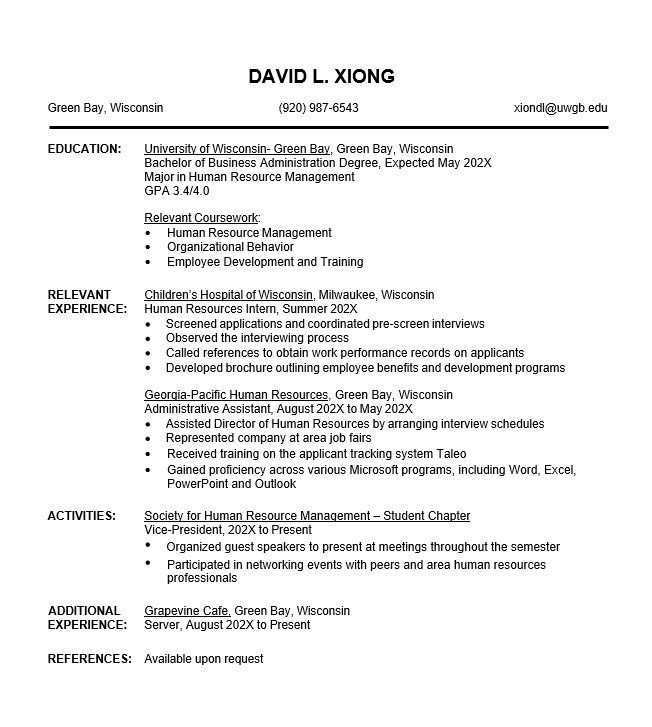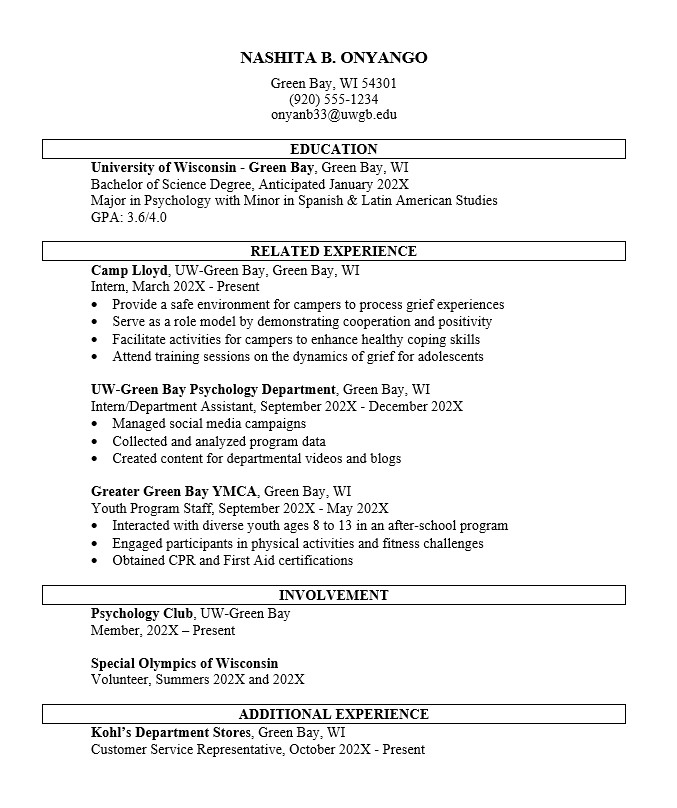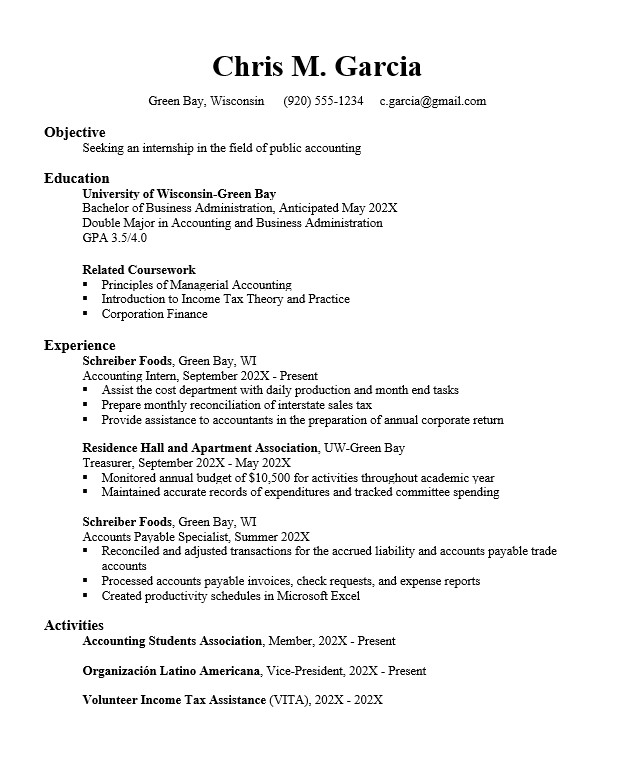Resume Tips
Take the First Step
Begin your professional career.
Create a resume to communicate your experience, education, skills and accomplishments to a potential employer. A well-written resume can help you move onto the next stage of the job or internship search – the interview.

Resume Writing Resources
Below are some ways to get the ball rolling on creating your resume.
Resume Writing Worksheet
Writing your first resume? Compile and organize your resume content with this Resume Writing Worksheet. (PDF)
Creating a Resume 101
Creating a Resume 101: An overview of resume writing basics showing the progression of a resume from new student to senior (PDF)
Complete Resume Guide
We lay out all the steps you need to take in our Creating a Resume Guide. (PDF)
Additional Resume Resources
If you're applying for a role outside the U.S. or a job within the U.S. Federal Government, view these resources:
International Resumes
View targeted resume guidelines and samples by specific country in the GoinGlobal Career Guides which are accessible by logging into your Handshake account and selecting "Career Center" then "Resources" on the top tool bar.
Federal Government Resumes
If you plan on working for the federal government, USAJOBS.gov provides resume resources specific to their requirements, as well as other applicant resources, on their Applicant Help Center site.
Resume Writing Videos
These short videos are packed with tips to help you develop a resume that stands out to employers.
Tips for New College Grads
When you are still in college, and a new graduate, your resume will look a little different than it does at mid-career.
Sample Resumes
Looking for resume samples or ideas for your specific major or intended career field? We encourage you to reach out to your assigned Career Advisor, which is listed in your SIS account. They will be able to advise you on formats and content that best market your education, skills and experience for your position(s) of interest.
Resume Layouts
Although there are a lot of resume templates to choose from, we recommend selecting a simple format that is easy to read, and allows you to effectively list and organize your content. Your Career Advisor can provide input regarding formatting and layout. Basic layouts include:
Left-Justified
Headings are listed in the left-side column; content aligned to the right.

Centered Headings
Headings are centered. Content will generally be aligned to the left.

Resume vs. Curriculum Vitae (CV)
What is a CV? Do I need one? For most job search purposes, you will be asked to submit a resume. If you are applying for research positions, fellowships or graduate programs, then you may be asked to provide a CV. While a resume is concise one-to-two page document, a CV is a lengthier version of a resume, which provides a full history of academic credentials. Do not submit a CV unless it is specifically requested by an employer or graduate program.
Format and content of a CV varies by career field. If you are asked to provide a CV, we recommend you not only talk with your Career Advisor, but also consult with your Faculty Mentor – or another faculty member with whom you share academic or career interests. View our general guide for Developing a Curriculum Vitae.
A Note About the Use of AI
AI can be a useful tool as you prepare your resume for a job or internship search. While it can provide suggestions for keywords, phrases or targeted content for specific positions, we urge you to use caution. Note these important considerations:
- Do not include any personal details such as name or contact information when using AI. Do not include confidential information such as ID numbers, financial information, or information that is considered proprietary in nature.
- Research the company or organization you are applying to. Do they have any policies about applicants using AI?
- AI can help get you started in the writing process and generate ideas, but it should not be used as a substitute for your own writing.
- Thoroughly review content generated from AI for accuracy. Also make sure it aligns with your writing style, personality and values. Also, make words and phrases are relevant for the industry and career field to which you are applying.
- Check any AI generated content for biased or offensive content.
- Some forms of AI may not be current, so use primary resources for information, such as a company’s website or the job/internship postings on an organization’s website.
